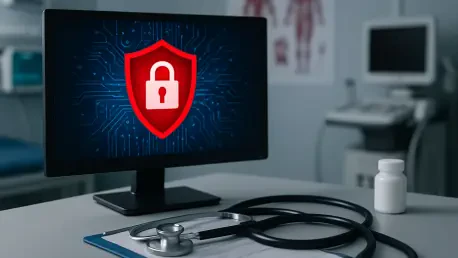Today, we’re sitting down with James Maitland, a renowned expert in robotics and IoT applications in medicine, who brings a unique perspective to the critical intersection of technology and healthcare. With a deep passion for harnessing innovation to improve patient outcomes, James has been at the forefront of addressing cybersecurity challenges in this rapidly evolving sector. In our conversation, we dive into the escalating cyber threats facing healthcare, the urgent need to prioritize security as a clinical issue, the impact of digital transformation, and the role of global regulations in shaping safer practices. We also explore real-world incidents and the vulnerabilities introduced by cutting-edge technologies.
Can you walk us through why cybersecurity has become such a pressing concern in healthcare over the past few years?
Absolutely, Lukas. The healthcare sector has seen a dramatic rise in cyber threats, largely because it holds some of the most sensitive and valuable data out there—think patient records, billing information, and even research data. Over the past decade, data breaches in this space have more than doubled, and the average cost of a breach now sits at a staggering $10.9 million, nearly double what we see in industries like finance. This surge is driven by the increasing digitization of healthcare systems and the growing sophistication of cybercriminals who target these vulnerabilities. It’s not just about data theft; these attacks can disrupt entire hospital operations, putting lives at risk.
How does the impact of a cyberattack in healthcare go beyond just financial losses and affect patient care directly?
That’s a critical point. A cyberattack isn’t just an IT headache—it’s a clinical risk. When systems go down, hospitals can’t access patient records, schedule surgeries, or even communicate effectively. This can delay treatments or lead to errors. A tragic example is the ransomware attack on Düsseldorf University Hospital in 2020, where systems were crippled, an ambulance had to be diverted, and sadly, a patient lost their life. These incidents show that cybersecurity failures can have devastating, real-world consequences for patient safety, which is why it needs to be a board-level priority, not just an IT fix.
What are some of the biggest hurdles healthcare providers face when adopting new technologies while trying to maintain strong cybersecurity?
Healthcare providers are in a tough spot with digital transformation. Many still rely on outdated, fragmented systems—sometimes even paper-based processes—for critical tasks like managing patient records. These legacy setups are often poorly integrated, creating security gaps that hackers can exploit. On top of that, there’s a significant shortage of professionals who understand both healthcare and cybersecurity. This talent gap means providers often depend on external vendors, which can limit their ability to build robust, in-house defenses. It’s a complex balancing act between modernization and protection.
How prepared do you think healthcare leaders are to tackle these growing cyber risks?
Honestly, the readiness level is concerning. About 47% of healthcare leaders admit they feel underprepared to handle cyber threats, and that statistic speaks volumes about the industry’s maturity in this area compared to sectors like finance. It shows a gap in awareness, resources, and strategic planning at the leadership level. To improve, leaders need to start by assessing their current cybersecurity posture, securing executive buy-in for investments, and building foundational defenses like vulnerability management and staff training. It’s about shifting the mindset to see cybersecurity as integral to patient trust and safety.
In what ways do emerging technologies like AI and connected devices heighten cybersecurity risks in healthcare?
New technologies like AI and IoT devices—think smart medical equipment or wearable health monitors—are game-changers for diagnostics and patient care, but they also expand the attack surface. Each connected device or AI system is a potential entry point for hackers if not properly secured. These tools often handle sensitive data in real-time, and a breach could expose or corrupt that information, disrupting services or even altering treatment plans. Balancing innovation with security means implementing strict access controls, regular updates, and continuous monitoring to ensure these technologies don’t become liabilities.
Can you shed light on the impact of recent ransomware attacks in the Middle East healthcare sector?
Certainly. A notable case involved the Everest ransomware group targeting a UAE-based healthcare group. They stole data on around 1,000 employees and about 4GB of confidential information. Thankfully, core clinical services weren’t directly hit, but the breach still damaged trust and exposed sensitive data. These incidents erode patient confidence in healthcare providers, as people start questioning whether their personal information is safe. It also puts immense pressure on organizations to respond quickly and transparently to rebuild that trust while managing the fallout.
How are global regulations influencing cybersecurity practices in healthcare, and what differences do you see in various regions?
Global regulations are stepping up to address these escalating threats. In North America, frameworks like HIPAA and HITECH set strict standards for protecting patient data, while in Europe, NIS2 focuses on broader cybersecurity resilience across critical sectors, including healthcare. These regulations push providers to adopt best practices and prioritize data security. In the Middle East, however, the landscape is less healthcare-specific. While countries like Saudi Arabia have national standards like the Essential Cybersecurity Controls, they apply across all sectors and lack the tailored focus we see in North America or Europe. This gap means providers in the region often need to take extra initiative to align with global benchmarks.
What is your forecast for the future of cybersecurity in healthcare as digital transformation continues to accelerate?
Looking ahead, I think cybersecurity in healthcare will face even greater challenges as digital transformation ramps up with things like Electronic Health Records, AI diagnostics, and data sharing. These advancements will improve care but also multiply vulnerabilities if security isn’t baked into the process from the start. I expect we’ll see stricter regulations globally, especially in regions like the Middle East, to match the pace of innovation. My hope is that healthcare leaders will increasingly treat cybersecurity as a core clinical priority, investing in both technology and talent to build resilience. If we don’t, the risks to patient safety and trust will only grow.









